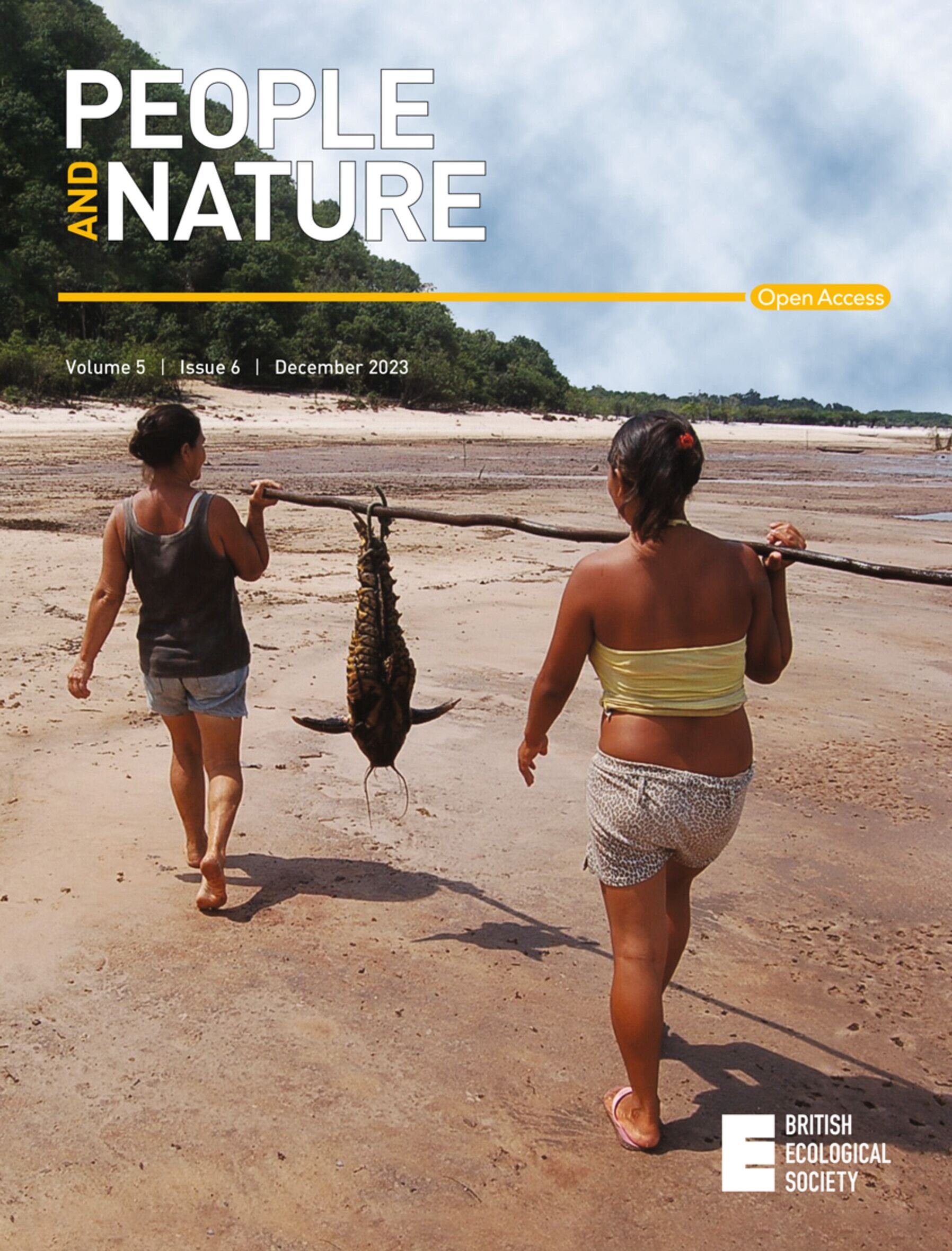The Steller's Sea‐Eagle in North America: An economic assessment of birdwatchers travelling to see a vagrant raptor
IF 4.9
1区 环境科学与生态学
Q1 BIODIVERSITY CONSERVATION
引用次数: 0
Abstract
Abstract Birdwatching—a cultural ecosystem service—is among the most popular outdoor recreational activities. Existing economic valuations of birdwatching typically overlook the economic contributions of birdwatchers travelling to see vagrant (out‐of‐range) birds. Economic valuations of vagrant birdwatching are few, and to date, no valuation of a large, charismatic vagrant species—or of a recurring individual vagrant bird—has been reported. During 2020–2022, a vagrant Steller's Sea‐Eagle ( Haliaeetus pelagicus ) was reported in several locations in North America, representing the first record of this species in these locations. In Winter 2020–2021, the eagle spent nearly a month on the eastern seaboard of the United States, and thousands of people travelled to see it. We conducted an online survey of individuals who travelled to see the eagle to estimate the individual and collective non‐consumptive use value of this vagrant birdwatching event. Using individual travel cost methodology, we estimated an average individual expenditure and, together with estimates of the total number of birdwatchers, we estimated non‐consumptive use value of the vagrant birdwatching event. Finally, we used a willingness to pay framework (via hypothetical donations to view the eagle) to evaluate the non‐consumptive use consumer surplus of the event. We estimated that, on average, individual birdwatchers spent $180 USD (95% CI = $156–$207) ignoring travel time—or $277 (95% CI = $243–$314) when accounting for travel time—to view the eagle. Furthermore, we estimated between 2115 and 2645 individuals travelled to see the eagle during December 2021 to January 2022. Thus, we estimated that the eagle generated a total expenditure between $380,604 and $476,626, or between $584,373 and $731,809 when accounting for travel time. Finally, based on travellers' willingness to pay, we estimated a non‐consumptive use consumer surplus of the event between $139,036 and $174,114. Assigning economic value to nature gives policymakers and business leaders footing to advance conservation in decision‐making. Although often overlooked in these decisions, vagrant birds supply ephemeral ecosystem services that might bolster community development efforts, particularly if vagrancy events occur with some predictability (e.g. recurring annually). Read the free Plain Language Summary for this article on the Journal blog.北美的斯特勒海鹰:观鸟者前往观看流浪猛禽的经济评估
观鸟作为一种文化生态服务,是最受欢迎的户外娱乐活动之一。现有的观鸟经济价值通常忽略了观鸟者去观察流浪(超出范围)鸟类的经济贡献。观鸟的经济价值很少,到目前为止,还没有一个大型的、有魅力的迁徙物种的价值,或者一个反复出现的迁徙鸟的价值。在2020-2022年期间,在北美的几个地方报道了一只流浪的虎头海鹰(Haliaeetus pelagicus),这是该物种在这些地方的首次记录。在2020-2021年的冬天,这只鹰在美国东海岸呆了近一个月,成千上万的人去看它。我们对前往观鹰的个人进行了在线调查,以估计这一流浪观鸟活动的个人和集体非消费利用价值。利用个人旅行成本方法,我们估算了平均个人支出,并结合观鸟者总数估算了流浪观鸟活动的非消耗性使用价值。最后,我们使用支付意愿框架(通过假设捐款来观看鹰)来评估事件的非消费性使用消费者剩余。我们估计,忽略旅行时间,个人观鸟者平均花费180美元(95% CI = 156 - 207美元),如果考虑旅行时间,则为277美元(95% CI = 243 - 314美元)。此外,我们估计在2021年12月至2022年1月期间,有2115至2645人去看鹰。因此,我们估计鹰的总支出在380,604美元至476,626美元之间,如果考虑到旅行时间,总支出在584,373美元至731,809美元之间。最后,根据游客的支付意愿,我们估计该活动的非消费性使用消费者剩余在139,036美元至174,114美元之间。为自然赋予经济价值,为决策者和商界领袖在决策中推进保护提供了基础。虽然在这些决策中经常被忽视,但候鸟提供了短暂的生态系统服务,可能会促进社区发展,特别是如果流浪事件发生具有一定的可预测性(例如每年重复发生)。在《华尔街日报》博客上阅读免费的《简明语言摘要》。
本文章由计算机程序翻译,如有差异,请以英文原文为准。
求助全文
约1分钟内获得全文
求助全文

 求助内容:
求助内容: 应助结果提醒方式:
应助结果提醒方式:


